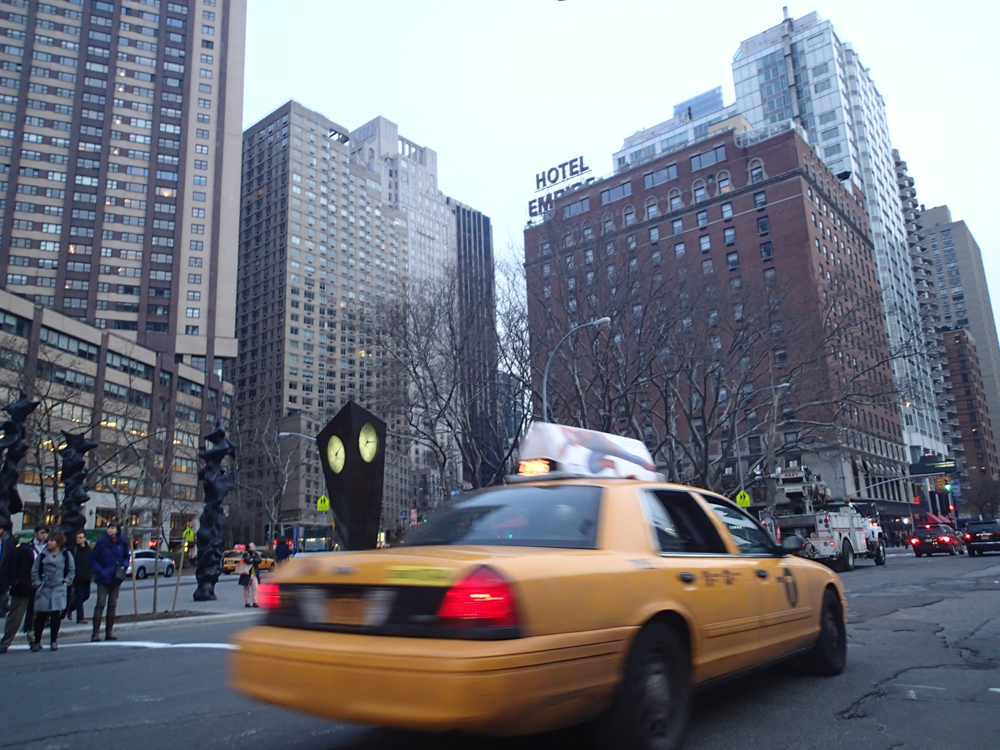UPPER WEST SIDE
(west of Central Park West, between 59th and 110th Street)
The city’s cultural heart, the Lincoln Center, is at the corner of 64th Street and Broadway. The huge development took place in the 1950s and 60s with Robert Moses’s direction, New York’s then chief architect, and John D. Rockefeller III’s financial support. In May, 1959 President Eisenhower travelled to the city to lay the first stone. When the he made the first move with a hoe, the New York Philharmonic Orchestra started playing Hallelujah conducted by the young Leonard Bernstein. Interestingly, Bernstein has another connection to the area: his famous musical, West Side Story, is set in the slums of the area’s earlier times. By the end of the sixties poverty disappeared from the area and gave way to pulsing cultural life amongst the flashy skyscrapers. Lincoln Center was the first major example of when cultural development ignites an area’s regeneration.
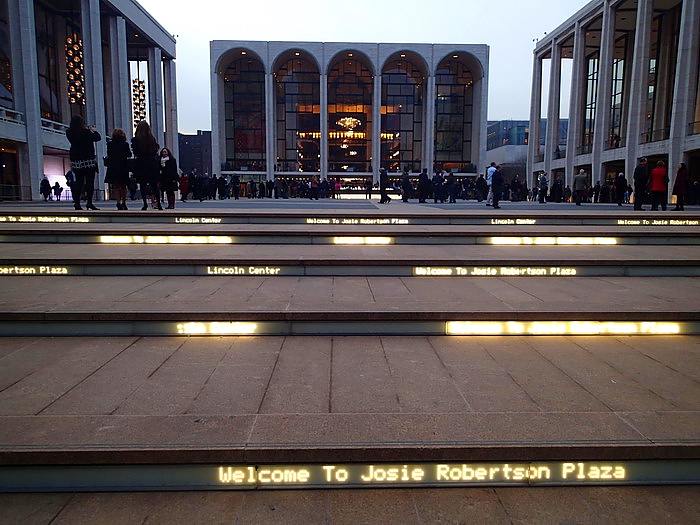
Out of the 29 open-air or enclosed institutions, mainly seven famous buildings attract the art lovers and art snobs: the Metropolitan Opera, the Avery Fisher Hall, the New York State Theater, the Library and Museum of Performing Arts, the Vivian Beaumont Theater, the Walter Reade Theatre and the Juilliard School of Music. The main square, the “plaza”, opens from Broadway between 63rd and 64th Street. If we stand with our backs to Broadway then the Metropolitan is in front of us, Avery Fisher Hall is to the right and the New York State Theater is to the left. The Metropolitan Opera is the same age as me, it was built in 1966. Its two large murals are by Marc Chagall. It’s also worth coming in the evening to admire the lovely glass fronted building behind the lit up fountain.
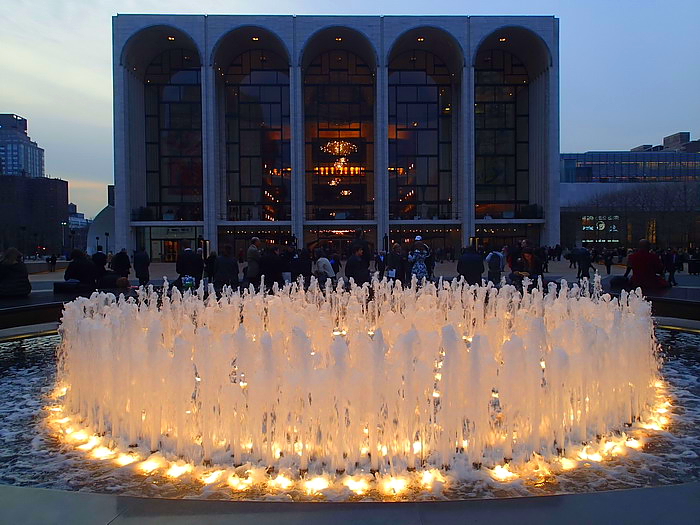
A legendary New York hot dog seller, the Gray’s Papaya, is at 2090 Broadway (by 72nd Street). Hot dog is one of the cheapest ways to fill our stomachs with something tasty and this chain is among the most popular in the city.
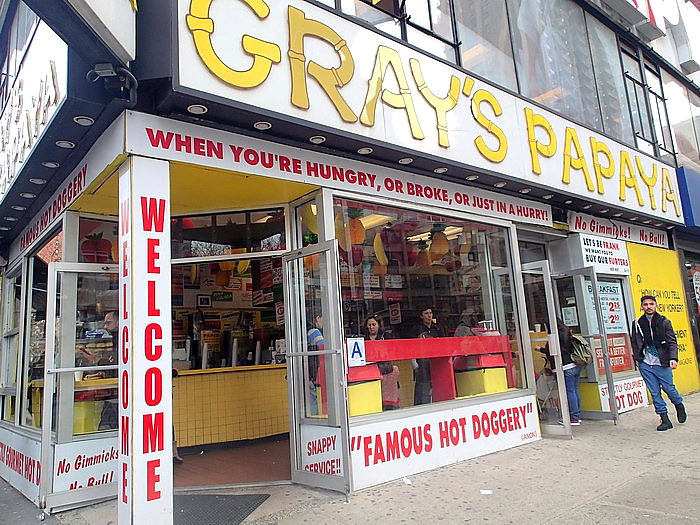
Levain Bakery, one of the most popular in the city, is at 167 W.74th Street. They serve typical American confectionary, the cookies being the coolest. It’s one of the city’s most popular bakery on Tripadvisor’s list.

Dakota House stands on the corner of Central Park West and 72nd Street and was unfortunately made famous by John Lennon’s murder on December 8, 1980. It was one of the first high-rise building in the city when the area was mainly populated by the settlers’ simple houses and even pigs and goats were raised among the poor hovels. That is why it got the Dakota nickname: it was as far from New York’s fashionable districts as the wild west Dakota states from the developed eastern shores.
A few blocks to the west, between 78th and 81st Street stands the imposing building of the American Museum of Natural History. If you read Salinger’s Catcher of the Rye, the museum will be familiar. When the hero was younger he came here often to admire the large Native American canoe. When I first visited, I also looked excitedly for the canoe – and it was right there in a large hall. The canoe, which is the largest of its kind in the world, was chiselled from cedar wood in Canada around 1878. It’s 19 metres long and 2.5 metres wide, and just as Salinger wrote, there are Native Americans sitting in it.
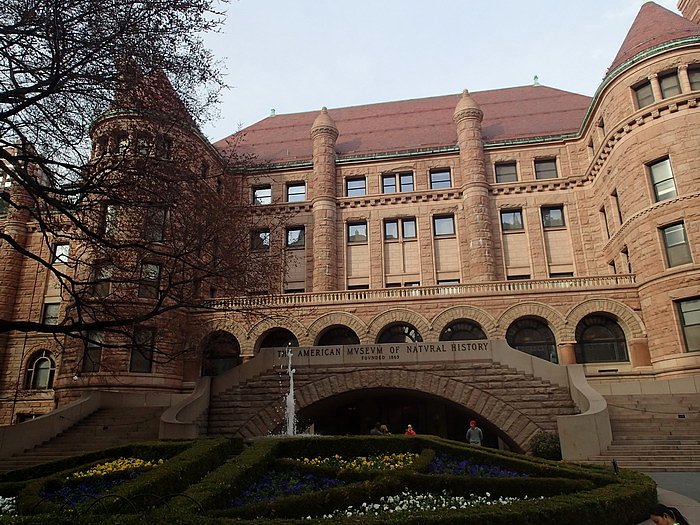

We can find one of the world’s largest collections of Natural Science artefacts in this huge Roman style building. The kids’ favourite is the fairly new dinosaur exhibit on the 4th floor that opened in 1995. But there lots of other interesting things. For example, the world’s largest meteorite, the 34 tonnes Ahnghito. Or the slice of wood on the first floor, on which – not a mistake – we can find 1342 growth-rings. The tree was approximately 100 metres tall, the trunk’s diameter was 27 metres at the bottom and it took two people 13 days to fell it in 1891.The diameter of the slice is almost 5 metres and it weighs 9 tonnes. To show how great oaks come from little acorns they also exhibited the seed of the giant sequoia. The weight of the resulting tree may become 65 billion times bigger than the little seed’s. Fascinating, isn’t it? Also, stuffed animals, skeletons, minerals and all varieties of rocks. We can find New York’s largest cinema screen here, the films are shown on a four story high screen.
On Central Park West there is a building with towers. From south looking north they are: the Century (between 62nd and 63rd Street), the Majestic (between 71st and 72nd Street), the San Remo (between 74th and 75th Street) and the Eldorado (between 90th and 91st Street). They were built in the last moments before the crash, between 1929 and 1931, based on the designs of the Hungarian-born Emery Roth and this skyscraper’s apartments are among the most popular – famous previous or current owners include Dustin Hoffman, Paul Simon and Marilyn Monroe.

The world famous food emporium, Zabar’s (Broadway and 80th Street), was founded by a Ukrainian immigrant. There is an unbelievable selection of cheeses, cut meats, fish, teas, coffees and other delicatessen. The second floor offers kitchen equipment below the usual prices, so we can prepare and cook all this at home. Even if you don’t want to buy anything, you must visit this amazing store of earth’s bounty.

It’s incredibly popular both among New Yorkers and tourists and it also appears in movies such as “You’ve got Mail”. Look around with me:

